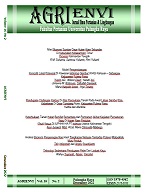the Composition and Structure of Vegetation of The Upstream Cisanggarung Watershed, Ciremai Mount National Park
DOI:
https://doi.org/10.36873/aev.v16i2.5553Keywords:
Composition and structure of vegetation, land cover, watersheds, national parkAbstract
Vegetation is one of the important biophysical components of ecosystems in landscape-based conservation area management. The purpose of the study was to identify the composition and structure of the vegetation in the Upper Cisanggarung watershed area of the Mount Ciremai National Park. Data were collected through vegetation analysis using the double plot method with systematic sampling on various types of land cover. Data analysis was done by quantitative descriptive. The results showed that the composition of the number of species in the plantation forest land cover type was higher than the natural forest and shrub land cover types. The total number of species found in all research areas is 94 species. Based on the horizontal stand structure, all land cover types approach the shape of the inverted J distribution (negative exponential), with the horizontal stand graph of plantation forest being at the top position, followed by natural forest and at the bottom being shrubs. Furthermore, plantation forest cover has the highest species diversity index and species richness index at the growth rate of seedlings to poles compared to other land covers, while for the tree level the species diversity index and the highest richness index are owned by natural forests.
Downloads
Downloads
Published
How to Cite
Issue
Section
License
Copyright (c) 2022 Agrienvi: Jurnal Ilmu Pertanian

This work is licensed under a Creative Commons Attribution 4.0 International License.







